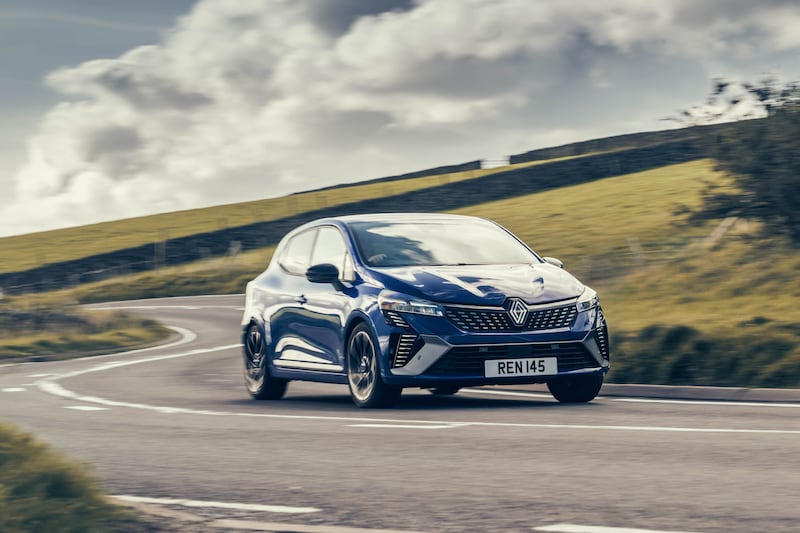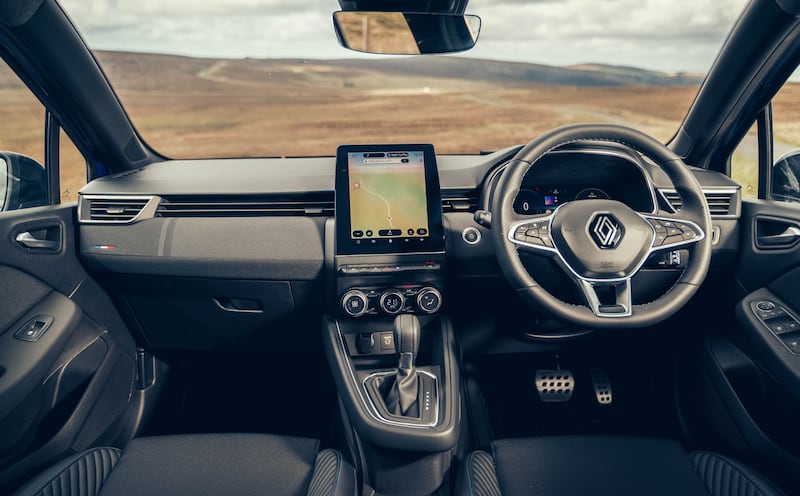There’s a palpable sense of excitement surround the upcoming Renault 5, a new EV clad in the retro styling of a car that epitomised the excitement that surrounded superminis in the 1980s.
Having had the pleasure of seeing prototypes and near-production models in the metal, I can assure you the new 5 will be worth the wait.
The appetite for the 5 is understandably undermining the midlife revival of Clio. Which is a shame, for this thirtysomething that replaced the original 5 still has a lot to offer.
It’s styling also encapsulates the current mood. If the original Clio of Nicole and Papa reflected the chirpy post-cold war optimism and innocence of the 1990s, then this latest Clio is the car for Joel and Ellie in the post-apocalyptic drama The Last of Us.
From Baby Reindeer and The Traitors to Bodkin and The 2 Johnnies Late Night Lock In: The best and worst television of 2024
100 Years of Solitude review: A woozy, feverish watch to be savoured in bite-sized portions
How your mini travel shampoo is costing your pocket and the planet - here’s an alternative
My smear test dilemma: How do I confess that this is my first one, at the age of 41?
The original was never fast, but it was usually fun and always uncomplicated, from its styling to its mechanics. After three decades and a multitude of styling touches, the new look has more world-weary menace.
The aggressive impression it signals is partly down to the metallic blue hue of our test car, adorned with Alpine regalia, denoting the firm’s racing division that also delivers its own niche sports cars.
In keeping with the recent report from environmental lobbyists T&E, the Clio has got wider and longer over the years, but strangely squatter. The new car is surprisingly lower to the ground than the 1990 original.
It’s also got a lot more powerful. Whereas the original offered in Ireland delivered a whopping 49hp from its 1.1-litre engine, this time around the new hybrid Clio puts out 140hp.

True, it weighs significantly more, and that powertrain now comprises a 1.6-litre petrol engine with a 1.2kWh battery pack and a 51kW electric motor, all combined with Renault’s sophisticated automatic transmission. But it delivered for us a credible fuel economy of 6l/100km (47mpg), which underlines the sense that, for all the sporty styling and Alpine badging, this car was set up primarily with fuel economy in mind. The Alpine links are simply aesthetic.
[ Renault’s Austral oozes Frenchness and likeable oddnessOpens in new window ]
That’s clear on the road as well. This Clio is easy to drive and puts the driver at ease, with the same soft reactions to steering inputs you get across the Renault range. The aggressively sporting exterior is not reflected in the way it drives; when you do push down the throttle hard, the engine screams in disapproval. It’s very much a hybrid in the same ethos as Toyota.
French cars are renowned for their soft ride and past Clios were no different, but this one is certainly on the firm side, possibly down to the added weight of battery and electric motor. What you lose in soft suppleness over the bumps, you make up for in sharper cornering and less body roll.
The sleeker styling does mean the roof line requires you to crouch a little more getting in and out, but in general the front cabin is spacious and most certainly a world away from the early iterations of Clio. The same can’t be said in the back. I recall a time in the late 1990s when we travelled three abreast across the back seat of a Clio from Dublin to Carlow on a college trip, but I don’t think the same thing could be done comfortably in this car. It’s fine for young families, but if you have teenagers in the house, you would be best to give it serious consideration.
Renault dramatically improved its interiors with the arrival of the Megane E-Tech, and it has carried on with this revamp in newer models, including this Clio.

Large, bright digital displays sit before the driver and in the centre console, and it’s all remarkably intuitive to operate, aided by some sensible buttons and knobs for features that are frequently adjusted by drivers without having to look away from the road. It doesn’t feature the fancy Google-based tech from other new Renaults, so it still gets the Easy Link set-up, but the menus are simple, the graphics are sharp and the processing speed is reasonable.
Then we come to the all-important price. This hybrid starts at €31,000, rising to €34,870 for the Esprit Alpine version we tested.
The thought of Nicole spending €30,000 on a Clio would have sent Papa to an early grave in 1990. Even with inflation, all the safety features, which must be fitted as standard, and all that on-board tech, it’s still an eye-watering price tag for what’s still billed as a supermini.
Admittedly it’s rivals, such as the Toyota Yaris, VW Polo and Peugeot 208, are in this sort of price range. Yet that should only spur buyers to look around, outside the confines of the supermini segment. Given the recent dramatic drop in the price of new EVs, it might be worth making the leap to full electric instead of hybrid.
And if that’s the case, then the temptation will clearly be to sit tight and wait for the arrival of the long-awaited 5.
Lowdown: Renault Clio E-Tech Hybrid
Power A 1.6-litre petrol, combined with a 1.2kWh battery, a 51kW electric motor, with a total output of 140hp with an auto transmission.
Emissions (Motor tax) 97g/km (€170)
Fuel consumption 4.2l/100km (WLTp)
0-100km/h 9.9 seconds
As tested €34,045 (Clio starts from €24,845)
Our rating 3/5
Verdict Aggressive looks belie this hybrid’s frugal fuel economy, but at this price you might want to wait for the upcoming 5.





